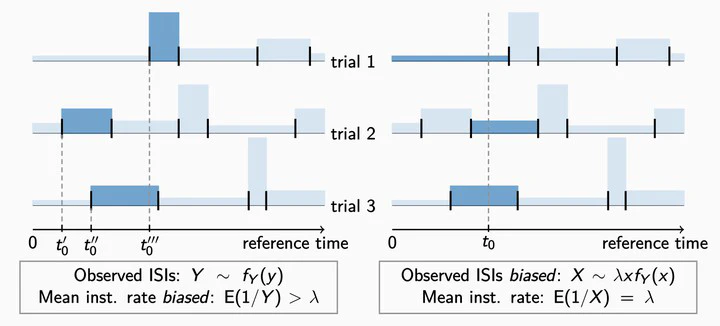
Abstract:
The rate coding hypothesis is the oldest and still one of the most accepted and investigated scenarios in neuronal activity analyses. However, the actual neuronal firing rate, while informally understood, can be mathematically defined in several different ways. These definitions yield distinct results, even their average values may differ for the simplest neuronal models. Such an inconsistency motivates us to revisit the classical concept of the instantaneous firing rate. We show that different notions of firing rate can be made compatible, at least in terms of their averages, by carefully discerning the time instant at which the neuronal activity is observed. In addition, we show that it is possible to estimate a quantity equivalent to the Fano factor and the squared coefficient of variation based on the intervals from only one specific (random) time.